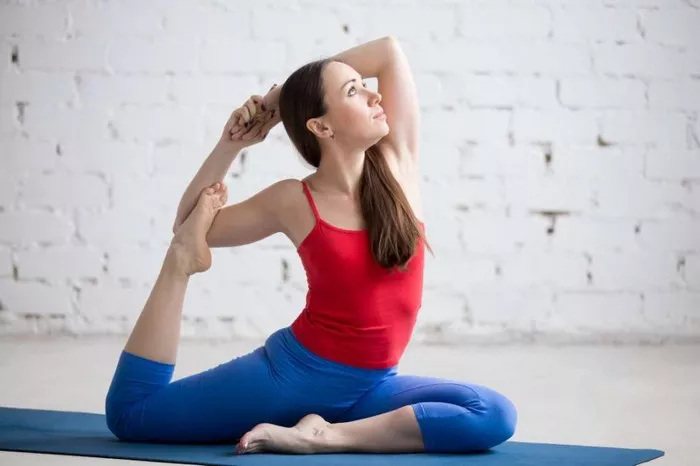Ooji Breath Yoga, an integral aspect of yoga practice, focuses on harnessing the power of breath to enhance physical, mental, and spiritual well-being. This article delves into the intricacies of Ooji breath, its origins, benefits, techniques, and its transformative impact on overall health. Whether you are a beginner or an experienced practitioner, understanding Ooji breath can enrich your yoga journey and cultivate a deeper connection with yourself.
What is Ooji Breath?
Definition and Origins
Ooji breath, often associated with the broader practice of pranayama, refers to a specific breathing technique that emphasizes controlled inhalation and exhalation. The term “ooji” derives from the Sanskrit word “ujjayi,” which means “victorious” or “to conquer.” This breathing technique has its roots in ancient yogic traditions and is known for its calming and energizing effects.
Historical Context
The practice of pranayama, including Ooji breath, dates back thousands of years to the origins of yoga in ancient India. Yogic texts such as the Hatha Yoga Pradipika and Yoga Sutras of Patanjali discuss the significance of breath control as a means to achieve higher states of consciousness and enhance physical health.
The Science Behind Ooji Breath
Physiological Benefits
Ooji breath involves a specific technique of inhaling and exhaling that affects the body’s physiology in various ways:
Increased Oxygenation: The slow and controlled nature of Ooji breath allows for deeper inhalations, enhancing oxygen exchange in the lungs.
Activation of the Parasympathetic Nervous System: This breath technique promotes relaxation by activating the parasympathetic nervous system, which counters the stress response.
Regulation of Heart Rate: Ooji breath can help stabilize heart rate and blood pressure, contributing to cardiovascular health.
Enhanced Lung Capacity: Regular practice strengthens the respiratory muscles and increases lung capacity, improving overall respiratory health.
Psychological Benefits
The effects of Ooji breath extend beyond the physical body, influencing mental and emotional well-being:
Stress Reduction: Engaging in Ooji breath can reduce cortisol levels, alleviating stress and anxiety.
Improved Focus and Concentration: The rhythmic nature of the breath encourages mindfulness, enhancing focus and cognitive function.
Emotional Regulation: By promoting relaxation, Ooji breath helps regulate emotions and can be a valuable tool in managing mood swings and emotional responses.
See also: Exploring Humming Yoga Breathing for Mindfulness and Relaxation
How to Practice Ooji Breath
Preparing for Ooji Breath Practice
Before diving into Ooji breath techniques, it’s essential to prepare your body and mind:
Find a Comfortable Space: Choose a quiet environment free from distractions. This can be indoors or outdoors, as long as it feels peaceful.
Choose a Comfortable Position: Sit in a comfortable cross-legged position or on a chair with your feet flat on the ground. Ensure your spine is straight and relaxed.
Set an Intention: Take a moment to set a personal intention for your practice, whether it’s relaxation, focus, or healing.
Step-by-Step Instructions for Ooji Breath
Begin with Normal Breathing: Start by observing your natural breath. Inhale and exhale gently without forcing the breath.
Inhale Deeply: Take a deep breath in through your nose, allowing your abdomen to expand. Feel the breath fill your lungs completely.
Constrict the Throat: As you inhale, gently constrict the back of your throat, creating a soft sound similar to ocean waves. This sound is known as the Ujjayi breath.
Exhale Slowly: Exhale slowly through your nose, maintaining the throat constriction. Focus on the sound of your breath as it flows out.
Continue the Cycle: Repeat this cycle of inhalation and exhalation, gradually lengthening the breath over time. Aim for a smooth and even rhythm.
Practice for 5-10 Minutes: Start with a few minutes of Ooji breath and gradually increase the duration as you become more comfortable with the technique.
Tips for Effective Practice
Focus on the Sound: The sound of Ooji breath is a crucial aspect of the practice. Listen to the rhythmic quality of your breath to enhance mindfulness.
Maintain a Soft Gaze: Keep your eyes soft and relaxed, or close them to minimize distractions and deepen your focus.
Be Patient: If you’re new to Ooji breath, it may take time to develop the technique. Be patient with yourself and practice regularly.
Integrating Ooji Breath into Your Yoga Practice
Asana Preparation
Ooji breath can be integrated into various yoga postures to enhance your practice:
Beginner Poses: Start with simple poses such as Mountain Pose (Tadasana) or Child’s Pose (Balasana) to establish a connection with your breath.
Dynamic Flows: Incorporate Ooji breath into Vinyasa flows, synchronizing your breath with movement to create a seamless practice.
Challenging Asanas: Use Ooji breath in more advanced poses like Warrior II (Virabhadrasana II) or Tree Pose (Vrksasana) to maintain focus and balance.
Meditation and Mindfulness
Ooji breath is an excellent tool for enhancing meditation practices:
Mindful Breathing: Begin your meditation session with Ooji breath to center yourself and calm your mind.
Visualization: Combine Ooji breath with visualization techniques to enhance your meditation experience and deepen your state of relaxation.
Daily Mindfulness: Practice Ooji breath throughout your day, especially during stressful moments, to ground yourself and regain focus.
Benefits of Regular Ooji Breath Practice
1. Improved Physical Health
Regular practice of Ooji breath can lead to better respiratory health, improved cardiovascular function, and enhanced overall physical well-being.
2. Enhanced Mental Clarity
The focus required for Ooji breath helps clear the mind, improving cognitive function, decision-making, and problem-solving abilities.
3. Greater Emotional Stability
By fostering relaxation and reducing stress, Ooji breath can lead to greater emotional resilience and stability.
4. Increased Mindfulness
The practice cultivates mindfulness, helping you stay present and aware in daily life, enhancing your overall quality of life.
Addressing Common Challenges
1. Difficulty with Breath Control
If you struggle with breath control, start with shorter sessions and gradually increase the duration. Focus on maintaining a steady rhythm rather than length.
2. Distractions During Practice
To minimize distractions, create a dedicated space for your practice and consider using calming music or nature sounds to enhance your focus.
3. Physical Discomfort
If you experience discomfort while practicing Ooji breath, assess your posture and make necessary adjustments. Use props as needed to support your body.
Conclusion
Ooji Breath Yoga offers a powerful pathway to enhance physical, mental, and spiritual well-being through the art of pranayama. By mastering this technique, practitioners can experience profound benefits, from improved health to greater mindfulness. Embrace the transformative power of Ooji breath, and let it guide you on your journey toward balance, harmony, and self-discovery. Through dedication and regular practice, you can unlock the full potential of your breath, fostering a deeper connection with yourself and the world around you.
You Might Be Interested In
Ouija Breathing Yoga: Mystical Practice of Breath and Energy





















